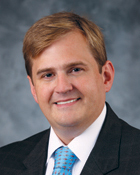
Image: americanbar.org
Texas attorney Hugh M. Ray, III focuses his practice on corporate bankruptcy cases. Before attaining his current position as a principal with McKool Smith, Hugh Ray, III helped to author rules of professional conduct in Texas and served as a liaison to the American Bar Association’s Commission on Evaluation of the Rules of Professional Conduct, also known as the “Ethics 2000” Commission.
The commission, first established in 1997, was tasked with examining and reevaluating the ABA’s Model Rules of Professional Conduct that were originally adopted in 1983. The intervening years had revealed weaknesses in the original rules that needed addressing, and other rules had accumulated commentary that gradually evolved beyond their original intent. Over the next five years, the new revised rules would reconcile these differences and establish a stronger ethical foundation for American lawyers.
The District of Columbia and every state except California have adopted the 2002 revision of the Model Rules of Professional Conduct, with many states adding their own commentaries that may or may not be considered binding for that jurisdiction. Significant changes include language in the Preamble that reinforces the lawyer’s responsibility to serve as a point of access between clients and the legal system, to keep a client as well-informed about their options as possible, and to take no action without at least the implied consent of the client. Other changes included outlining where specific rules override others, such as the lawyer’s obligations to make truthful statements, keep client confidentiality, and take no action that would be known to contribute to criminal activity, all of which could come into conflict and, under the previous rules, be difficult to prioritize.


You must be logged in to post a comment.